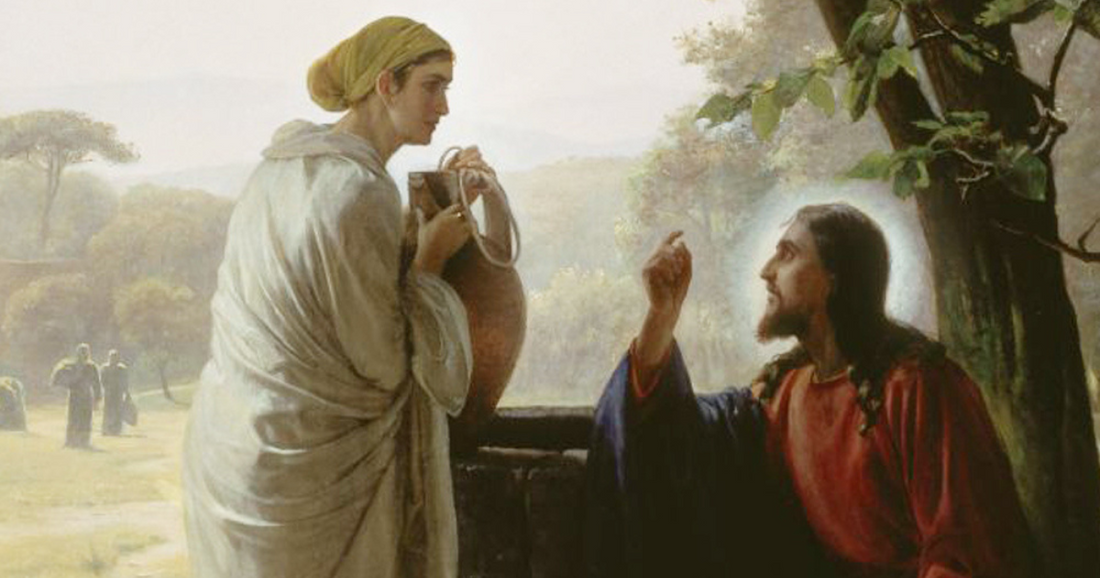
Faith Without a Miracle
The Ascension TeamDo you need miracles in order to have faith? Using the story of the Woman at the Well, Mike “Gomer” Gormley helps deepen our understanding of what should be the foundation of our faith and how essential it is that we allow Christ into our hearts.
Snippet from the Show
Miracles do not guarantee faith. Belief and acceptance of Christ’s word does.
Essential Elements of Catholic Discipleship
- Life of Christ by Venerable Archbishop Fulton J. Sheen
Previous Episode
- Why Jesus Christ attacks the Pharisees is because they only focus on externals and not the human heart, the source of desires.
- Christ both starts and ends with the heart.
- Extreme obedience at its most noble is self-discipline, at its least is used for self-interest.
- Jesus goes after the Pharisees and Scribes, not just the bad ones, but all of them.
Review
Last week we talked about Jesus’ constant confrontation with the Pharisees.
This Week’s Question
Why does this outcast woman of an outcast people respond so powerfully to Jesus?
Solution
Those lost are precisely those for whom Christ came. He enters into their lives especially their brokenness. Most of us try to hide our brokenness from others. The Samaritan woman hid, but Christ found her out, revealing he’s known the truth of her all along, and he loves her still.
Introduction
The Venerable Fulton J. Sheen wrote 66 books in his life, but Life of Christ is considered to be one of his greatest. It was Mother Teresa’s favorite book and they were personal friends. In this book are insights into the conversation of the Samaritan woman at the well. She goes on a journey of discovery of who Jesus is: “a Jew”, “a man”, “Sir”, “A prophet”, the “Christ” to finally “Savior of the world”.
Part One
The two greatest converts were when the Bible says that Jesus was tired or weary, the Samaritan Woman and the Syrophoenician Woman. “Christ was weary in His word, but not of it.” As Sheen says, “The willing heart creates its own opportunities”.
Isaiah 65:1 “They found me who sought me not.”
What do we mean by “Israel”?
- Jacob’s new name given when he wrestled the angel
- The nation of 12 tribes at the foot of Mt. Sinai
- The kingdom under David and Solomon
- The Northern Kingdom during the split from the Kingdom of Judah in the South
The Problem of Samaria
720 years before Christ it was destroyed by the Assyrians and repopulated. Those five foreign nations brought their own gods. They became a hybrid religion and no longer purely Israelite. They always joined up with the enemies of Judah till Judah burned their cities and salted their fields.
The Problem of the Samaritan Woman
It begins with the fact that she was alone at a well getting water at noon. Women didn’t do that. The well was the local watering hole and strangers as well as workers would occupy that space. Women went together at the first or last hours of the day for the day’s chores and cooking. This woman was not with the other women, which hints that something was deeply wrong in her relationships with the townsfolk.
Part Two
Here was Jesus’ philosophy of life. All the human satisfactions and cravings of the body and soul have one defeat; they do not satisfy forever. The Lord speaks from true spiritual depth, the woman only from sensual knowledge. Now our Lord attacks the conscience of this carnal woman: “Go and fetch your husband." “I do not have a husband.” “True enough…”
- Jesus reveals to her what he has known all along - her past is not hidden.
- She obfuscates to remove her conscience from scrutiny: she goes Jew vs. Samaritan
- Jesus even more shockingly dismisses her argument by revealing the truth of Christianity: “Neither here nor in Jerusalem… but in spirit and in truth.”
- Jesus confronts the idolatry at the heart of Samaria and ancient Israel: “You worship what you do not know. We worship what we know, for salvation is from the Jews”.
- She is confronted with her own past personally and corporately and states that her people and the tattered remains of that ancient Yahwist religion, are awaiting a prophet.
- Jesus fully admits to her that he is the Messiah. He doesn’t tell anyone else until Caiaphas the high priest commands him under oath.
Part Three
Her response is shocking. She abandons her water jar and runs into the town to summon the very people that hate, shun, and dismiss her. She goes into the town and tells her story, a story of “He told me all that I’ve ever done.” Her sins become a signpost.
Sheen: She becomes the first door-to-door missionary!
Many of the Samaritans from that city came to believe in him through the Woman’s testimony. Then they encourage him to stay 2 days. Many more came to believe in him through his preaching.
Conclusion
Jesus worked no miracle, save that of knowing her past. No “sign” was worked, yet many came to faith. In John 2 with the wedding feast at Cana, he refused to “reveal Himself to them”. With Nicodemus in John 3, he couldn’t come to faith because he couldn’t receive the word of Christ. Yet, this whole Samaritan town, starting with their own rejected Woman at the Well, responds not to miracles and signs, but to the words of Christ.
This is in direct contrast with the Pharisees, who think themselves sinless and thus in no need of a Savior. They have hardened hearts and even when they see a miracle from Christ, find in it a cause to hate and reject him further. Miracles do not guarantee faith. Belief and acceptance of his word does.